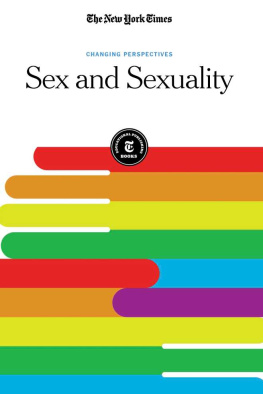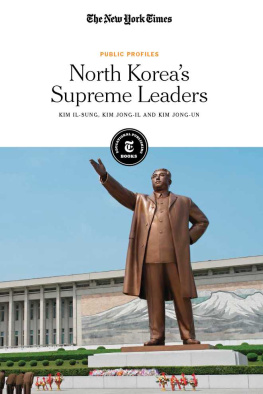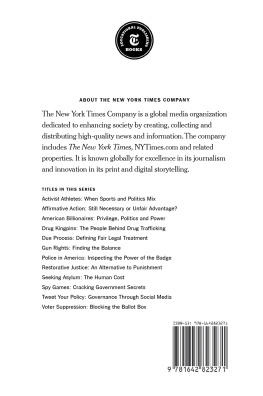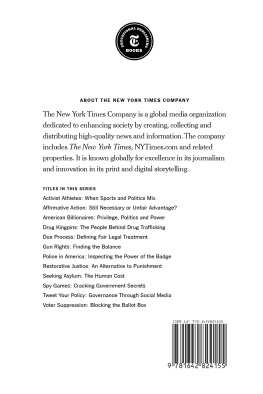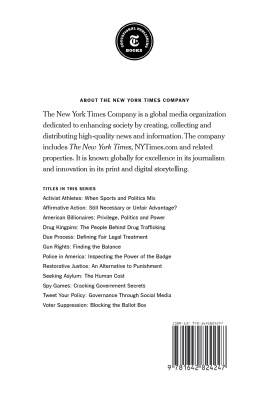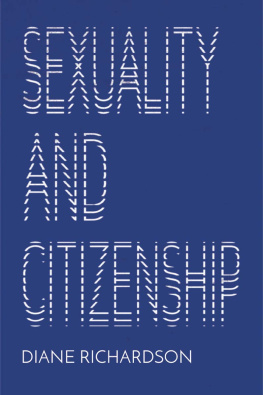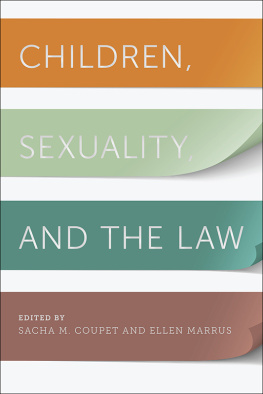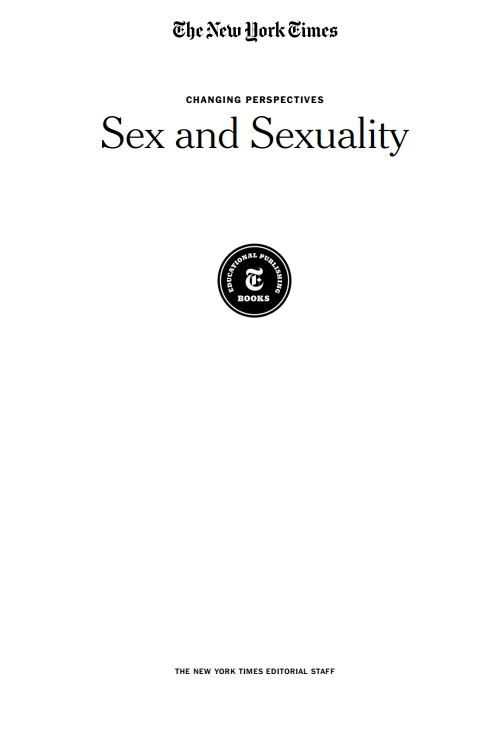Published in 2019 by New York Times Educational Publishing in association with The Rosen Publishing Group, Inc.
29 East 21st Street, New York, NY 10010
Contains material from The New York Times and is reprinted by permission. Copyright 2019 The New York Times. All rights reserved.
Rosen Publishing materials copyright 2019 The Rosen Publishing Group, Inc. All rights reserved. Distributed exclusively by Rosen Publishing.
First Edition
The New York Times
Alex Ward: Editorial Director, Book Development Phyllis Collazo: Photo Rights/Permissions Editor Heidi Giovine: Administrative Manager
Rosen Publishing
Megan Kellerman: Managing Editor Julia Bosson: Editor Greg Tucker: Creative Director Brian Garvey: Art Director
Cataloging-in-Publication Data
Names: New York Times Company.
Title: Sex and sexuality / edited by the New York Times editorial staff. Description: New York : New York Times Educational Publishing, 2019. | Series: Changing perspectives | Includes glossary and index. Identifiers: ISBN 9781642821550 (library bound) | ISBN 9781642821543 (pbk.) | ISBN 9781642821567 (ebook)
Subjects: LCSH: Sex instruction for childrenJuvenile literature.
| Sexual healthJuvenile literature. | Sexual orientation
Juvenile literature.
Classification: LCC HQ53.S493 2019 | DDC 613.9071dc23
Manufactured in the United States of America
On the cover: Times and attitudes have changed, and the language used to discuss sexual orientation and gender identity has also changed; Ben Wiseman/The New York Times.
Contents
Introduction
in june 2015, the Supreme Court ruled that bans on same-sex marriage were unconstitutional, effectively legalizing gay marriage across all fifty states. The response was tremendous: hundreds of celebrants gathered in Washington, decked out in rainbow garb and chanting Love has won, and same-sex couples flocked to courthouses across the country, some participating in mass weddings. Millions posted messages in support on social media, using hashtags including #LoveIsLove.
It would be easy amidst these celebrations to forget how quickly cultural attitudes toward sex and sexuality have shifted. Less than half a century prior, not only was legalized gay marriage unthinkable, but sodomy laws were in place across the country, criminalizing same-sex encounters. Transgender individuals had few legal protections and were rarely acknowledged in mainstream culture. And, until the 1970s, a woman could not open a credit card in her name without first obtaining the signature of a man.
The second half of the twentieth century bore witness to a sexual revolution that occurred on several fronts. Not only did gay and lesbian individuals receive wider cultural acceptance and recognition, but women and other sexual minorities found a place for themselves in the mainstream of American society and made headway into achieving equal rights. However, progress did not always follow a clear path: along the way, these pioneers experienced bigotry, hate crimes and legal resistance. However, their work ultimately resulted in a shift of policy, rights and perspectives.
This book is broken into five chapters that show the evolving attitudes toward sex and sexuality: Gay and Lesbian Rights, Transgender Stories, Queer Identities, Feminism and Sexual Consent and Behavior.

TY WRIGHT/THE NEW YORK TIMES
Lena Williams, right, and Crystal Zimmer hold hands after they were married at Hamilton County Courthouse in Cincinnati on June 26, 2015.
The reporting on these topics demonstrates the interconnectedness of the lives of LGBT+ individuals and women with the political and cultural gains these groups have made. Our understanding of sex and sexuality is a direct result of minority groups fighting and advocating for equal treatment.
These articles also show how the attitudes of the reporters and the newspaper as a whole have evolved over time. As an article in the first chapter shows, reporting on gay rights in the past featured opinions from psychoanalysts who believed homosexuality could be treated and referred to gay men as deviates and inverts. For many years, most articles on transgender people focused on surgery or violence, sensationalizing but not humanizing transgender issues. And words like pansexual, genderqueer and gender-noncomforming were nowhere in The New York Times archives.
It is important to note that this title bridges several issues surrounding sex and sexuality. Sexual orientation is distinct from gender identity: while the former has to do with ones attraction to other people, the latter relates to ones understanding of ones own self.
The cultural conversation around sex and sexuality continues to develop with time. In 2017, when news of Harvey Weinsteins history of sexual assault broke, women across the world spoke up as part of the #MeToo movement, elevating the dialogue about gender equality. Sexual assault cases on college campuses raised conversations about sexual consent, and dating apps have changed the dynamics of dating. And the youngest generation has already demonstrated an interest in creating a world without such rigid gender and sexual categories. Ultimately, the individual pieces in this title celebrate the diversity of gender identities and sexual expressions that make up American life and culture.
Chapter 1
Gay and Lesbian Rights
In the early morning hours of June 28, 1969, New York City police conducted a raid on the patrons of the Stonewall Inn, a gay bar in the West Village. What followed was a spontaneous riot that became known as the foundation of the gay rights movement. This chapter documents The New York Times' reporting on gay and lesbian rights, demonstrating the growing cultural acceptance of gay identities and evolving editorial attitudes toward how these issues should be covered.
Morals: On the Third Sex
BY MURRAY SCHUMACH | MAY 7, 1967
when word got out last week that Columbia University had become the first collegiate organization in the nation to issue a charter to an organization seeking equal rights for homosexuals, it brought a few rays of sunshine to the twilight world that alternates between the furtive and the flagrant.
And yet, to those homosexuals who have taken considerable risk to try to win for themselves the right to be judged as individuals, it was hardly surprising that this advance for them was made in New York City. For it is here that the third sex is establishing a national capital.
From the police and the District Attorneys office, as well as from the Mattachine Society, defender of homosexual rights, come reports that the homosexuals find in New York these days more opportunities
for employment than they have ever known in this country anywhere. They still find plenty of evidence of discrimination, hostility and harassment, but the climate has improved decidedly. Says an important police official:
The whole area of morals is a problem and probably always will be. But the situation for homosexuals has improved since last April when we decided that the police were not to be used to entrap homosexuals. I think it has been made very clear to the police that homosexuality is not illegal. A guy can mince down the street with marcelled blond hair and if he doesnt bother anyone it is not illegal. What we get is a steady stream of complaints about such situations.

